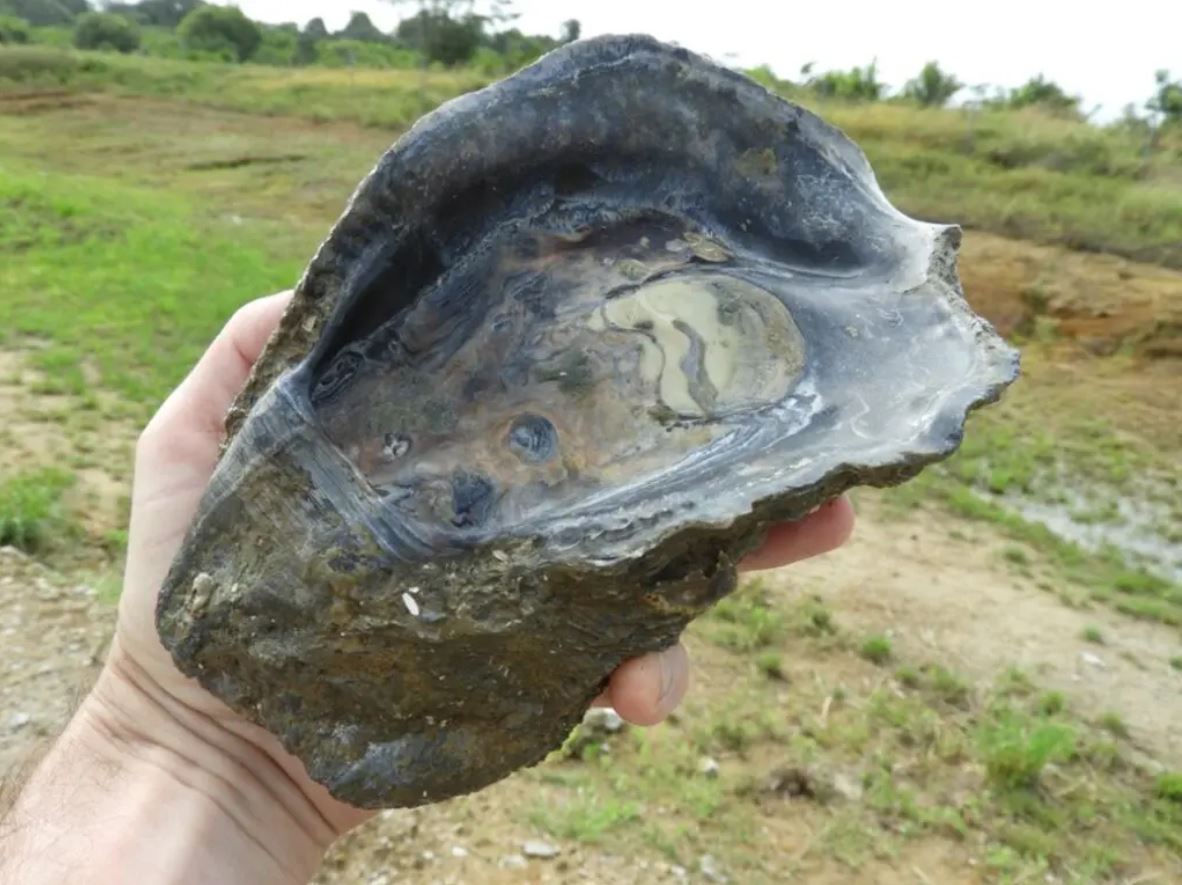A rich 125,000-year-old coastal ecosystem discovered under Ariane 6 in French Guiana
27th March 2024
Frédéric Quillévéré of LGL-TPE has contributed to a study published in PNAS describing the discovery of fossil assemblages covering the last 130,000 years, beneath the Ariane 6 rocket launch site at Kourou in French Guiana.
Picture: Fossil oyster dating from around 125,000 years ago, discovered near the Ariane 6 launch pad, in Kourou, French Guiana, during the 2019 field campaign. (Credit: P.-O. Antoine)

An international consortium of paleontologists, geologists and biologists, coordinated by scientists from the Montpellier Institute of Evolutionary Sciences (University of Montpellier/CNRS/IRD) and the University of Guyana/Géosciences Montpellier, describes the discovery of fossil assemblages spanning the last 130,000 years, beneath the Ariane 6 rocket launch site in Kourou, French Guiana. These coastal assemblages, rich in over 270 species of animals, plants and microorganisms, are the first to have been unearthed in the equatorial Atlantic. They provide information on the environmental and climatic conditions that prevailed in the region and its populations, both during a very warm period (the last interglacial, from -128,000 to -116,000 years ago) and the cold period that followed (the last glacial stage, from -100,000 to -15,000 years ago).
This discovery, published in the Proceedings of the National Academy of Sciences of the USA (PNAS), provides valuable information on unanthropized equatorial Atlantic tropical coastal ecosystems and the potential long-term impact of climate change on endangered species.